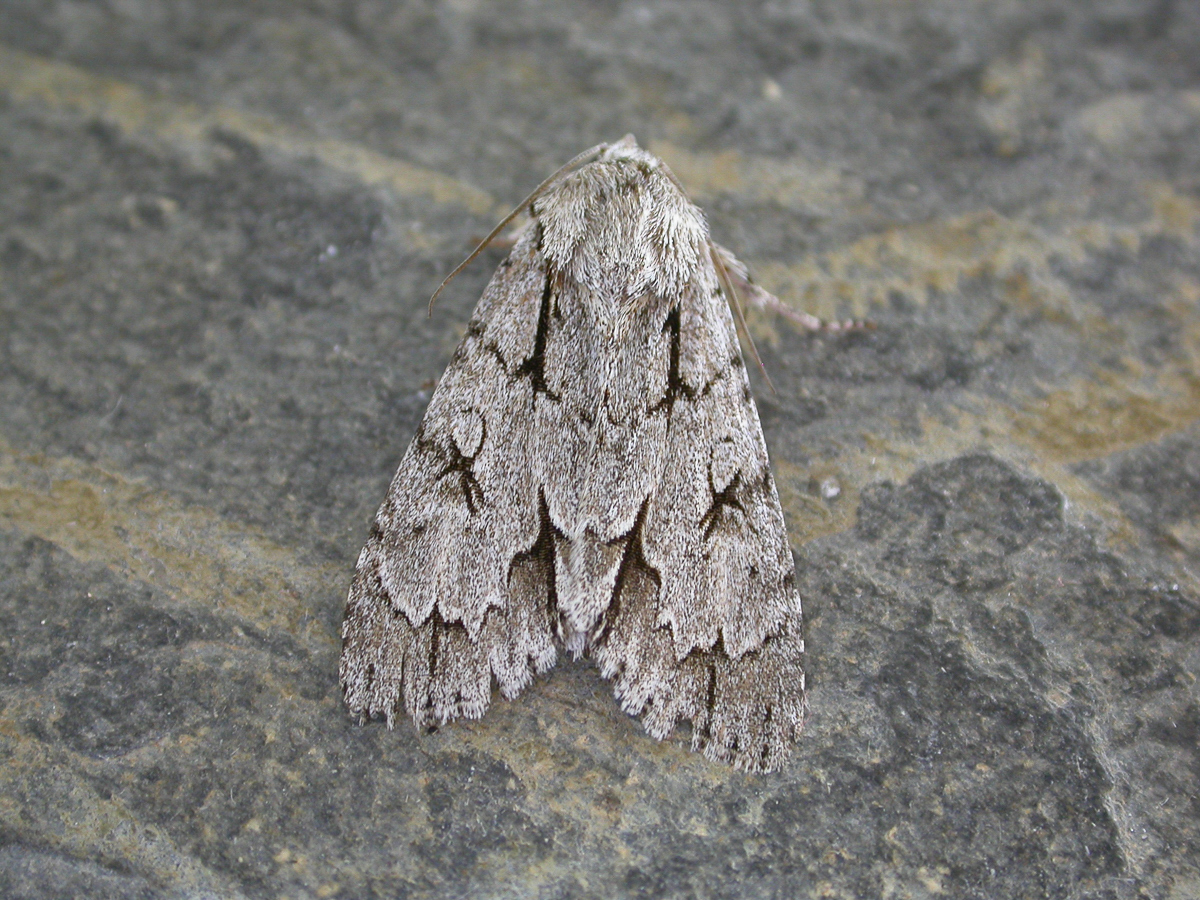
Photo © Andy Mitchell
The grey dagger (Acronicta psi) is a moth of the family Noctuidae.
This species can be found from Europe and North Africa to northern Iran, central Asia, southern and central Siberia and Mongolia. In the Levant it is found in Lebanon and Israel.
These moths mainly inhabit deciduous forests, hedgerows, parks and gardens, at an elevation up to 1,600 metres (5,200 ft) above sea level.
Acronicta psi has a wingspan of 34-45 mm (1.3-1.8 in). These moths have grey forewings with bold black dagger-shaped markings. (The Latin specific name also refers to these markings, as resembling the Greek letter psi, w.) The hindwings are dirty grey, generally paler in the male.
The moth is very similar to the dark dagger (Acronicta tridens) and identification is generally only possible by minute examination of the genitalia. See Townsend et al. However, in general this moth is generally darker in colour than the dark dagger and always lacks the white hindwings often present in the male of that species. Moreover, the larvae of the two species are very different.
The larva of Acronicta psi is quite hairy, greyish or brownish below and black above, with red spots along the sides and a bold yellow stripe along the back. It has a distinctive horn just behind the head (absent from the larva of dark dagger).
The grey dagger flies at night from June to August and is attracted to light and sometimes to sugar.
It feeds on a wide range of plants, mainly trees and shrubs (see list below). The species overwinters as a pupa.
Recorded food plants include:
Source: Wikipedia
The primary larval foodplants are Apple (Malus domestica), birches (Betula spp.), Blackthorn (Prunus spinosa), Bracken (Pteridium aquilinum), elms (Ulmus spp.), Firethorn (Pyracantha coccinea), hawthorns (Crataegus spp.), Hazel (Corylus avellana), Highbush Blueberry (Vaccinium corymbosum), Juneberry (Amelanchier lamarckii), limes (Tilia spp.), oaks (Quercus spp.), Pear (Pyrus communis), Plum (Prunus domestica ssp. domestica), roses (Rosa spp.), Rowan (Sorbus aucuparia), Sweet Chestnut (Castanea sativa) and willows (Salix spp.).